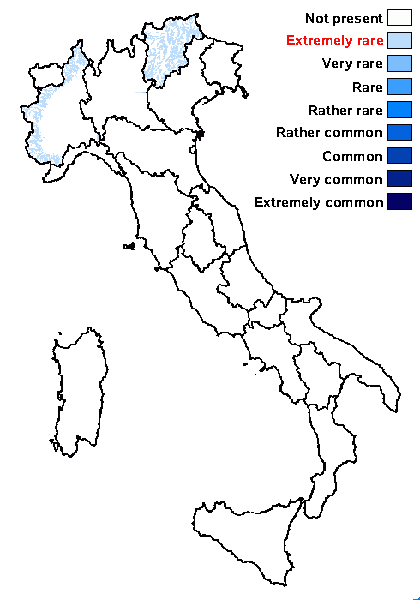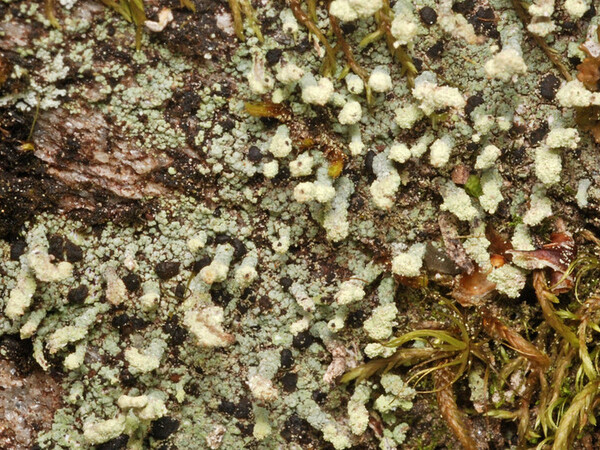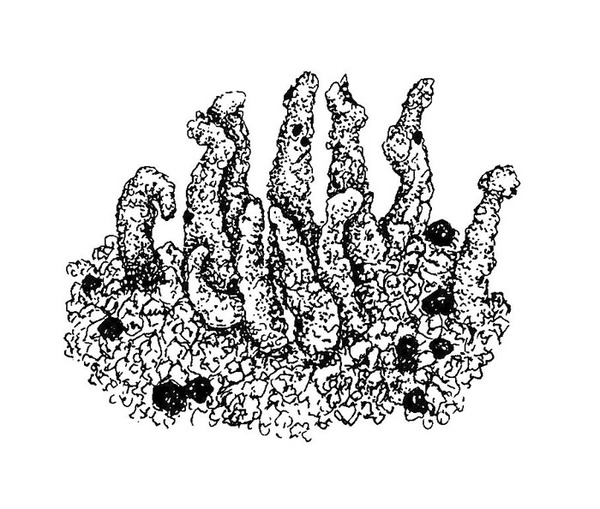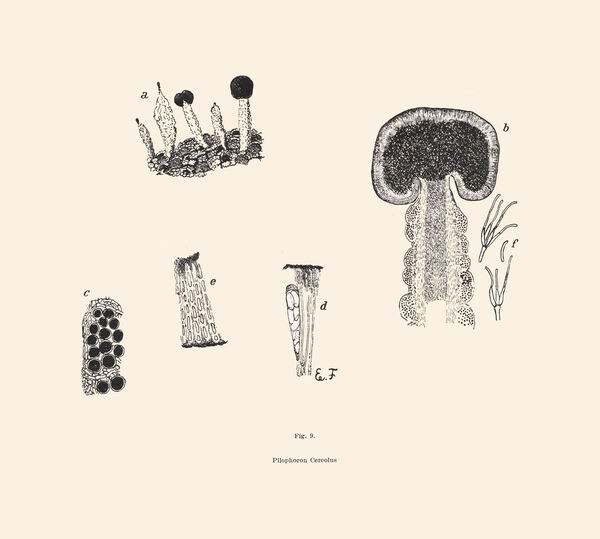Pilophorus cereolus (Ach.) Th. Fr.
Lichenogr. Scand., 1: 55, 1871. Basionym: Lichen cereolus Ach. - Lichenogr. Suec. Prodr.: 89, 1799.
Synonyms: Stereocaulon cereolinum Ach. non auct. ital.; Stereocaulon cereolum (Ach.) Ach.
Distribution: N - TAA (Nascimbene & al. 2022), Piem.
Description: Primary thallus crustose, persistent, of sorediate, 0.1-0.2 mm broad, grey-green to grey-brown granules, with scattered, brown to almost black, 1-2 mm wide cephalodia. Pseudopodetia simple, solid, to 1.5-4(-8) mm tall, 0.3-1(-1.5) mm thick in the middle, the sterile and pycnidiate ones thinner at the base and apex, farinose-sorediate throughout, often irregularly curved. Stalks composed of strongly gelatinized cells with narrow lumina. Apothecia biatorine, rare, solitary at tips of pseudopodetia, black, spherical, to 1.5 mm across. Proper exciple not developed; epithecium blackish brown, the pigment deposited between the terminal cells of the paraphyses; hymenium colourless to purplish, c. 80 μm high; hypothecium absent or very poorly developed. Asci 8-spored, elongate-clavate, with a thin, outer amyloid layer and a thickened tholus penetrated by a pore, the sides of which stain I/KI+ deep blue, Porpidia-type. Ascospores 1-celled, hyaline, spindle-shaped, 14-21 x 5-6.5 μm. Pycnidia bottle-shaped, black, on the tips of short pseudopodetia. Conidia sickle-shaped, hyaline, c. 5 x 1 μm. Photobiont chlorococcoid, Nostoc in the cephalodia. Spot tests: K+ yellow, C-, KC-, P-. Chemistry: atranorin, isousnic acid and zeorin.Note: an arctic-alpine, probably incompletely circumpolar lichen found on siliceous rocks in moist-wet situations near treeline; restricted to the Alps in Italy, and perhaps more widespread, but certainly not common. All Italian records are historical.
Growth form: Fruticose
Substrata: rocks
Photobiont: green algae other than Trentepohlia
Reproductive strategy: mainly sexual
Commonnes-rarity: (info)
Alpine belt: absent
Subalpine belt: extremely rare
Oromediterranean belt: absent
Montane belt: extremely rare
Submediterranean belt: absent
Padanian area: absent
Humid submediterranean belt: absent
Humid mediterranean belt: absent
Dry mediterranean belt: absent

Predictive model
Growth form: Fruticose
Substrata: rocks
Photobiont: green algae other than Trentepohlia
Reproductive strategy: mainly sexual
Commonnes-rarity: (info)
Alpine belt: absent
Subalpine belt: extremely rare
Oromediterranean belt: absent
Montane belt: extremely rare
Submediterranean belt: absent
Padanian area: absent
Humid submediterranean belt: absent
Humid mediterranean belt: absent
Dry mediterranean belt: absent

Predictive model
 INDEX FUNGORUM
INDEX FUNGORUM
 GBIF
GBIF
 DOLICHENS
DOLICHENS




